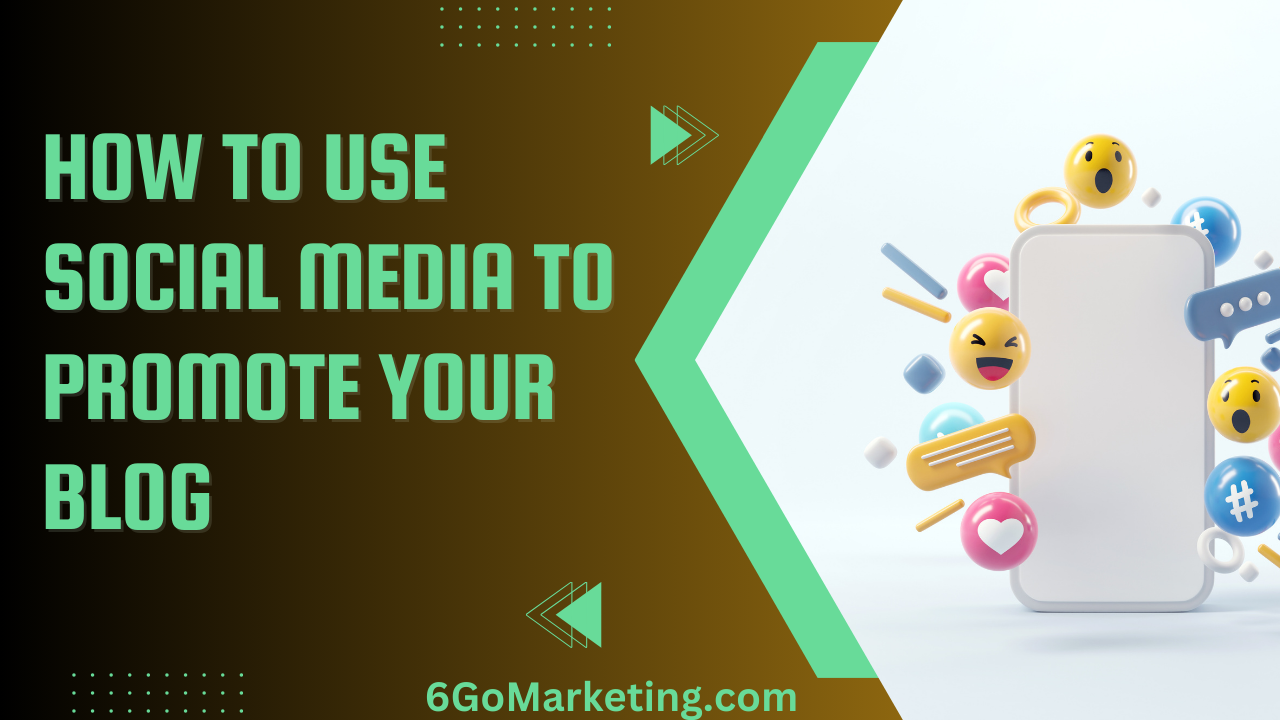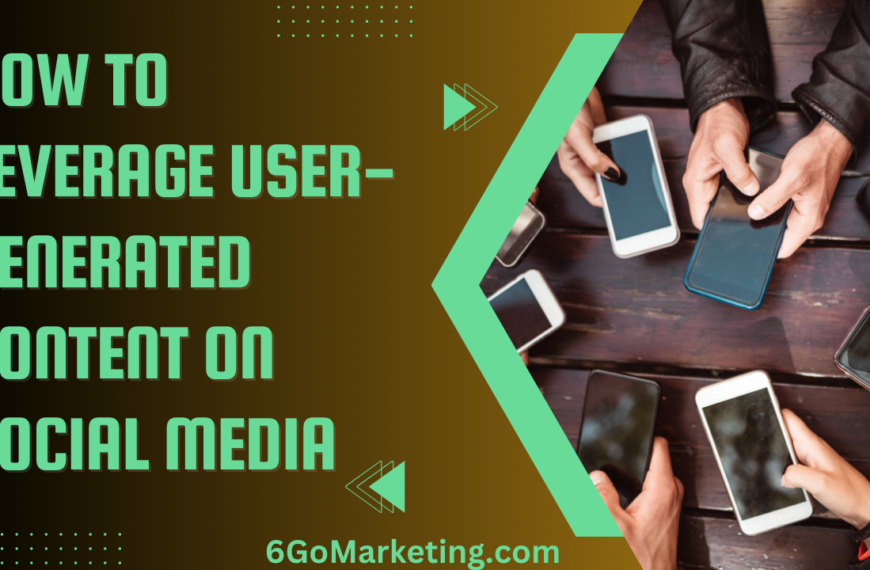In the digital age, social media has become one of the most powerful tools for promoting content, driving traffic, and building a loyal audience. For bloggers, leveraging social media is crucial for gaining visibility, engaging with readers, and increasing the reach of your blog. Whether you’re new to blogging or looking to grow your existing audience, knowing how to use social media effectively can make a significant difference in your blog’s success.
In this blog post, we’ll explore the key strategies and best practices for using social media to promote your blog. We’ll discuss how to choose the right platforms, create engaging content, build relationships with your audience, and track the performance of your efforts.
Why Social Media is Important for Bloggers
Before diving into the “how,” it’s essential to understand why social media is so crucial for bloggers. With billions of people using social media platforms daily, these channels provide unparalleled opportunities to connect with potential readers and share your blog content with a larger audience.
Benefits of Using Social Media to Promote Your Blog:
- Increased Traffic: Social media can drive targeted traffic to your blog, helping you reach readers who are interested in your content.
- Enhanced Visibility: By sharing your blog posts across multiple social media platforms, you increase the likelihood of being discovered by new audiences.
- Audience Engagement: Social media allows you to interact directly with your readers, respond to comments, and build a community around your blog.
- Content Virality: Social sharing increases the chances that your content will be shared by others, potentially reaching a much larger audience than through organic search alone.
Table: Key Benefits of Social Media for Blog Promotion
| Benefit | Description |
|---|---|
| Increased Traffic | Social media can drive visitors to your blog. |
| Enhanced Visibility | Reach a wider audience by sharing content on different platforms. |
| Audience Engagement | Build relationships with readers through direct interaction. |
| Content Virality | Social sharing can lead to wider exposure. |
Choosing the Right Social Media Platforms for Your Blog
Not all social media platforms are created equal, and each one serves a different purpose. When promoting your blog, it’s essential to choose the platforms that align with your blog’s niche and target audience.
Key Social Media Platforms for Bloggers:
- Facebook: With over 2.8 billion active users, Facebook is one of the largest social media platforms. It’s ideal for bloggers who want to share articles, join niche groups, and engage with a broad audience. Facebook also offers paid advertising options that can help boost your content to targeted audiences.
- Instagram: Instagram is highly visual and is a perfect fit for lifestyle, travel, food, and fashion bloggers. With features like Stories, Reels, and IGTV, Instagram allows you to share visually engaging content and connect with your followers in real-time.
- Twitter: Twitter is a great platform for promoting blog posts in real-time, sharing short updates, and engaging in conversations with other bloggers and industry experts. Its fast-paced nature makes it ideal for content that can be shared multiple times throughout the day.
- Pinterest: Often overlooked, Pinterest is one of the best platforms for driving traffic to blogs, especially for niches like DIY, crafts, home decor, and food. Pinterest is essentially a visual search engine, and high-quality pins can drive traffic to your blog for months or even years.
- LinkedIn: If you’re writing a business, marketing, or professional blog, LinkedIn is the go-to platform. It’s perfect for sharing industry-related content, networking with professionals, and promoting blog posts to a professional audience. You can use LinkedIn Analytics which is a powerful tool for tracking the performance of these posts and optimizing future content.
Table: Social Media Platforms and Their Best Uses for Bloggers
| Platform | Best For | Ideal Content Type |
|---|---|---|
| General blog promotion, groups | Blog post links, images, discussions, live videos | |
| Visual content, lifestyle blogs | High-quality images, videos, stories, Reels | |
| Real-time content, news | Blog post links, threads, short updates | |
| Visual search engine, evergreen content | Blog post graphics, how-to guides, tutorials | |
| Professional blogs, business-related | Articles, industry news, professional insights |
Creating Engaging Social Media Content for Blog Promotion
To effectively promote your blog on social media, simply sharing links isn’t enough. You need to create engaging content that resonates with your audience and encourages them to visit your blog. Here’s how you can do that.
1. Tailor Your Content for Each Platform
Each social media platform has its unique features and audience expectations. Tailoring your content for each platform is key to maximizing engagement.
- Facebook: On Facebook, use catchy headlines and eye-catching visuals to grab attention. Mix up your posts by sharing blog links, asking questions, or creating polls related to your content. Engage with groups that focus on topics relevant to your blog’s niche.
- Instagram: Share high-quality images or short videos (Reels) that offer a glimpse into your blog’s content. Use engaging captions, hashtags, and Instagram Stories to give your audience a sneak peek of your latest posts.
- Twitter: Twitter thrives on brevity. Craft punchy tweets with a call to action, and don’t hesitate to share your blog post multiple times throughout the day. Retweet relevant content and engage in Twitter chats to increase visibility.
- Pinterest: Design vertical pins that are visually appealing and include your blog’s title. Create multiple pins for the same blog post to drive more traffic. Use keyword-rich descriptions for SEO and pin consistently.
- LinkedIn: Share in-depth posts that provide value to your professional audience. Include key takeaways from your blog post and invite discussions in the comments section. Join LinkedIn groups and share your blog content with industry professionals. Moreover, using a LinkedIn email finder will streamline your efforts to reach out to industry experts and share this valuable content with others.
2. Use Eye-Catching Visuals
Visual content is crucial on social media. Posts with images, videos, or infographics tend to get higher engagement than text-only posts. Use tools like Canva or Adobe Spark to create custom graphics, pins, and social media posts that match your blog’s branding. Use tools like Canva or Adobe Spark to create custom graphics, pins, and social media posts that match your blog’s branding. For video content consider investing in professional video production to create high-quality videos that effectively convey your message and engage your audience.
3. Write Compelling Headlines and Captions
Your headlines and captions should be enticing and encourage readers to click through to your blog. Focus on the benefits your readers will get by reading your post, and always include a clear call-to-action (CTA), such as “Read more,” “Check out the full post,” or “Find out how.”
4. Use Hashtags to Increase Reach
Hashtags are essential for increasing the discoverability of your posts. Research relevant hashtags for your niche and use a mix of popular and niche-specific hashtags. On platforms like Instagram and Twitter, you can use up to 30 hashtags per post to reach a wider audience.
Table: Best Practices for Creating Engaging Social Media Content
| Platform | Visual Content Suggestions | Headline/Caption Tips |
|---|---|---|
| Use eye-catching images, short videos | Write clear, benefit-driven headlines, include a CTA | |
| High-quality photos, Reels, Stories | Use engaging captions, relevant hashtags, and emojis | |
| GIFs, short videos, link previews | Keep tweets concise, include links and hashtags | |
| Vertical pins, infographics | Write keyword-rich descriptions, focus on how-to content | |
| Professional images, documents | Use longer captions with insights or tips, invite discussions |
Building Relationships and Engaging with Your Audience
Promoting your blog on social media is not just about posting content—it’s about building relationships and engaging with your audience. The more you interact with your followers, the more likely they are to visit your blog and share your content.
1. Respond to Comments and Messages
Engaging with your audience is crucial for building a community around your blog. Make it a habit to respond to comments, messages, and mentions promptly. Acknowledge your followers’ feedback and show that you value their input.
2. Participate in Social Media Communities
Join Facebook groups, LinkedIn groups, Twitter chats, and Pinterest boards related to your blog’s niche. Actively participating in these communities helps you connect with like-minded individuals and can lead to increased visibility for your blog.
3. Collaborate with Influencers and Fellow Bloggers
Collaborating with influencers or other bloggers in your niche is an effective way to expand your reach. You can collaborate on guest posts, joint giveaways, or social media takeovers. You can also engage with podcasters in your niche by reaching out to them directly or contacting one of the podcast promotion companies. These partnerships can introduce your blog to new audiences and help build credibility These partnerships can introduce your blog to new audiences and help build credibility.
4. Host Contests and Giveaways
Running contests or giveaways is a great way to encourage engagement and promote your blog. You can ask your followers to share your blog post or tag friends in exchange for a chance to win a prize related to your blog’s theme.
Table: Engagement Strategies for Building Relationships
| Strategy | Description |
|---|---|
| Respond to Comments | Engage with followers by responding to comments and messages. |
| Participate in Communities | Join groups and chats related to your niche to increase visibility. |
| Collaborate with Influencers | Partner with influencers or bloggers to expand your reach. |
| Host Contests and Giveaways | Run contests to encourage followers to share your content. |
Tracking Performance and Adjusting Your Strategy
Once you’ve implemented your social media promotion strategy, it’s important to track your performance and adjust your approach based on the data. Use analytics tools to measure how your social media efforts are contributing to your blog’s success.
1. Monitor Key Metrics
To gauge the success of your social media efforts, it’s essential to track key performance indicators (KPIs). These metrics will provide insight into what’s working and what needs improvement. Some important metrics to monitor include:
- Engagement Rate: This includes likes, comments, shares, and retweets. High engagement indicates that your content resonates with your audience.
- Click-Through Rate (CTR): The percentage of people who clicked on your blog link from a social media post. A higher CTR suggests that your content is compelling enough to drive traffic.
- Follower Growth: Tracking the increase in followers on each platform can help you understand the effectiveness of your content and promotion strategies.
- Referral Traffic: Use tools like Google Analytics to see how much traffic is coming to your blog from each social media platform. This will help you determine which platforms are most effective for driving visitors.
Table: Key Social Media Metrics for Blog Promotion
| Metric | Description |
|---|---|
| Engagement Rate | Measures likes, comments, shares, and retweets. |
| Click-Through Rate (CTR) | Percentage of users who clicked on your blog link from a post. |
| Follower Growth | Tracks the increase in followers over time. |
| Referral Traffic | Shows how much traffic social media is driving to your blog. |
2. Use Social Media Analytics Tools
Most social media platforms have built-in analytics tools to help you track your performance:
- Facebook Insights: This tool provides data on post reach, engagement, and audience demographics. It helps you see which posts are performing well and when your audience is most active.
- Instagram Insights: Use Instagram’s native analytics to track engagement, follower growth, and impressions. It also shows which content types (posts, Stories, Reels) generate the most interactions.
- Twitter Analytics: Twitter’s analytics feature tracks tweet impressions, engagements, and link clicks. You can also monitor your audience’s interests and demographics.
- Pinterest Analytics: This tool helps you track how many people are viewing and engaging with your pins. You can also monitor how much traffic Pinterest is sending to your blog.
- LinkedIn Analytics: LinkedIn offers analytics for personal profiles and company pages. You can track post engagement, follower demographics, and referral traffic to your blog and with LinkedIn analytics tools, you can gain deeper insights into post engagement, follower demographics, and referral traffic to your blog. These tools help optimize content strategy and enhance audience targeting.
By using these tools, you can identify the types of content that perform best on each platform and adjust your strategy accordingly.
3. A/B Testing for Content Optimization
A/B testing, or split testing, is an excellent way to optimize your social media content. This process involves creating two different versions of a post with slight variations (e.g., different headlines, images, or CTAs) and seeing which one performs better. Over time, you can use these insights to refine your approach and ensure you’re consistently posting the most effective content.
4. Adjust Your Strategy Based on Insights
Once you’ve gathered data from your social media analytics, adjust your strategy to focus on what’s working best. For example:
- If you notice that certain posts are generating more traffic to your blog, create more content in a similar format.
- If engagement is low on a particular platform, it may be worth reassessing whether your audience is active there or if you need to change your approach.
- Experiment with posting times, hashtags, and content formats to find the combination that works best for your blog.
Table: How to Adjust Your Social Media Strategy Based on Performance
| Metric Observation | Adjustment to Make |
|---|---|
| Low Engagement Rate | Try different content types (videos, images), adjust captions. |
| High CTR but Low Engagement | Improve post engagement by asking questions or prompting shares. |
| High Follower Growth but Low CTR | Refine your CTAs to make them more compelling. |
| High Referral Traffic | Focus more efforts on the platforms driving the most blog traffic. |
Best Practices for Consistent Blog Promotion on Social Media
To consistently grow your blog through social media, it’s essential to follow a few best practices that help maintain momentum and keep your audience engaged.
1. Create a Content Calendar
A content calendar helps you plan and schedule your social media posts in advance, ensuring a consistent posting schedule. By organizing your content in advance, you can stay on top of holidays, special events, and trends that are relevant to your blog.
- Benefits of a content calendar:
- Keeps your social media posts organized and timely.
- Helps maintain a consistent posting schedule.
- Ensures you have a balanced mix of promotional and engaging content.
2. Repurpose Blog Content
One of the most effective ways to maximize your blog promotion is by repurposing content across different social media platforms. Repurposing involves taking existing blog posts and transforming them into different formats for each platform. One way to do this is by hosting live or recorded sessions on a private streaming platform that your audience can access on demand.
- Examples of repurposing blog content:
- Turn blog posts into Twitter threads.
- Create infographics or slideshows based on your blog content for Instagram or LinkedIn.
- Film short videos or tutorials summarizing your blog post and share them on Instagram Reels or YouTube.
This approach helps you get more mileage out of your content while catering to the unique strengths of each platform.
3. Leverage User-Generated Content
Encourage your audience to create and share content related to your blog. User-generated content (UGC) can be a powerful way to build social proof and promote your blog. You can ask your followers to share their thoughts on your blog posts, tag you in related content, or participate in challenges or giveaways.
- Example: If your blog focuses on travel, ask your readers to share their travel photos and tag you in their posts. You can then share their content on your own social media channels, which boosts engagement and visibility.
4. Post Consistently and at Optimal Times
Consistency is key when promoting your blog on social media. Posting regularly ensures that your audience stays engaged and your content remains visible. Additionally, posting at optimal times—when your audience is most active—can significantly increase your engagement and reach.
5. Cross-Promote on Multiple Platforms
Don’t limit your blog promotion to one platform. Cross-promote your content across multiple social media channels to maximize your reach. For example, you can share a blog post on Facebook, post a snippet of the content on Instagram, tweet a link, and create a Pinterest pin—all leading back to the same blog post.
Table: Best Practices for Consistent Blog Promotion
| Best Practice | Description |
|---|---|
| Create a Content Calendar | Plan and schedule posts in advance to ensure consistency. |
| Repurpose Blog Content | Turn blog posts into different formats for various platforms. |
| Leverage User-Generated Content | Encourage followers to create content related to your blog. |
| Post at Optimal Times | Share content when your audience is most active. |
| Cross-Promote on Multiple Platforms | Promote your blog across different social media channels. |
Conclusion: Using Social Media to Amplify Your Blog’s Reach
Social media is a powerful tool for promoting your blog and reaching a wider audience. By choosing the right platforms, creating engaging content, interacting with your followers, and consistently tracking your performance, you can build a loyal audience and drive significant traffic to your blog.
Remember that success with social media doesn’t happen overnight. It requires consistent effort, experimentation, and refinement. By staying active, engaging with your audience, and optimizing your strategy, you can effectively use social media to promote your blog and grow your online presence in 2024 and beyond.
Whether you’re just starting out or looking to boost an established blog, these strategies will help you harness the power of social media to achieve your blogging goals.








